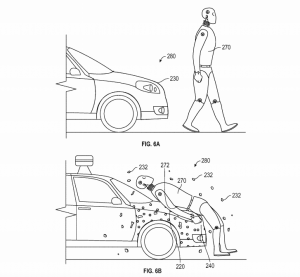June 7, 2016

When it comes to vehicle safety, the automotive industry has made major advancements over the years. Despite this, automobile accidents continue to kill more Americans than the country’s most recent wars. Of the nation’s vehicle related deaths, about 14 percent of them involve pedestrians. The automobile industry is considering ways to prevent these deaths. In fact, the recent trend of rounded hoods feature this particular design trait because studies show that it can save the life of a pedestrian.
Volvo is taking safety a step further by equipping its vehicles with front-end airbags to absorb a portion of the crash energy that these types of accidents emit while Jaguar manufactures a few cars that raise the vehicle’s bonnet a few inches after a crash to soften the blow. However, Google just requested a safety patent that may be a game changer for the auto industry. To save the lives of pedestrians, Google has invented flypaper for cars.
Automobile crashes have several stages. In situations involving cars and pedestrians, the first stage is the actual impact. This phase can cause plenty of damage. Stage two is when the impact sends the pedestrian off the front of the car and onto the surface of the road. The second phase is typically the one that kills the pedestrian. Google’s flypaper technology is intended to prevent these deaths.
The company’s patent involves an adhesive layer that would be applied to the hood of a vehicle. This sticky layer would prevent the second phase of an auto pedestrian accident from occurring because the person would adhere to the front of the car. Google’s flypaper does not decrease a crash’s initial impact, but it does prevent the rebound effect. The technology may even stop people from leaving the scene of an accident after they’ve hit someone.
Many people are asking if this is the best idea since the addition of a sticky substance to the front-end of a car would result in an excessive amount of debris adhering to it. Over time, the sticky nature of the flypaper would likely decrease. Fortunately, Google is wise and has a solution to this problem. Cars that have the flypaper in place would also come with a shell that cracks to reveal its sticky layer when a large impact occurs. While it may seem unlikely that this safety feature will ever make its way to the market, critics should keep in mind that Google is a powerful entity that frequently follows through with its schemes.

Tags: Google car features
Hello {{User.FirstName}} {{User.LastName}}.
You are logged in with email {{User.Email}}.